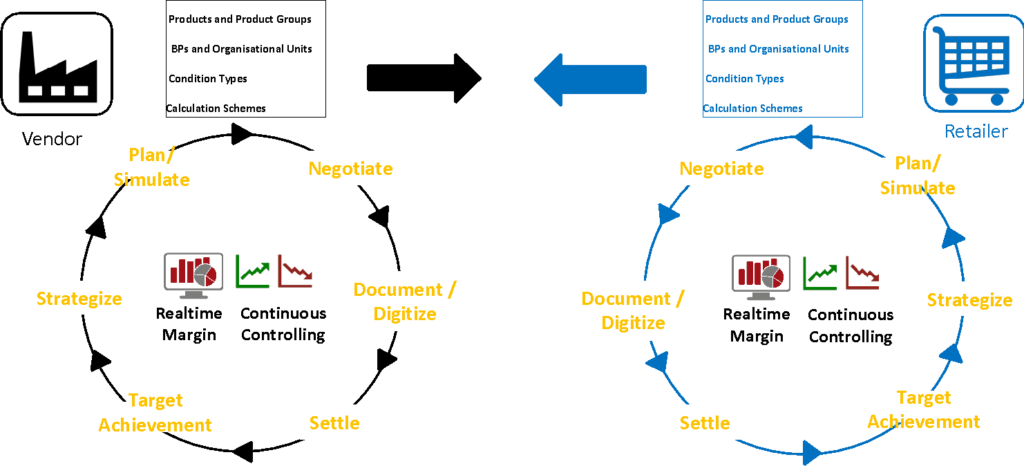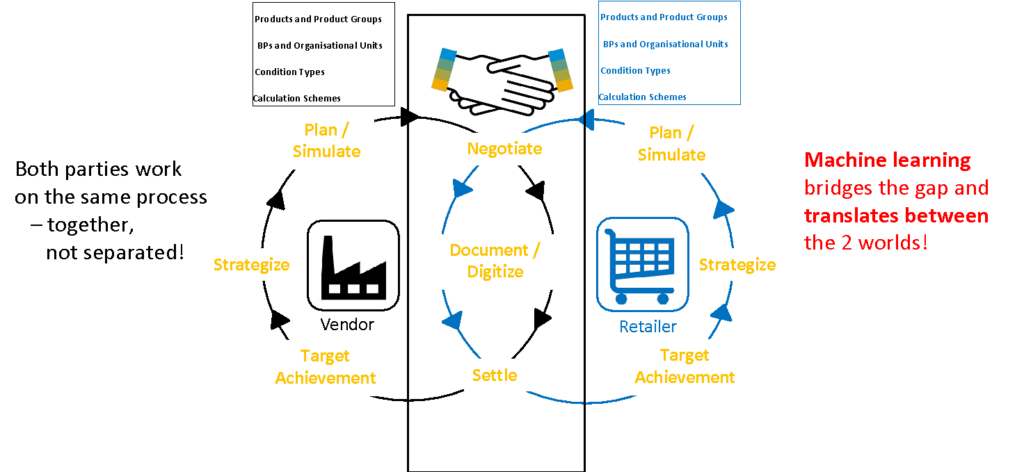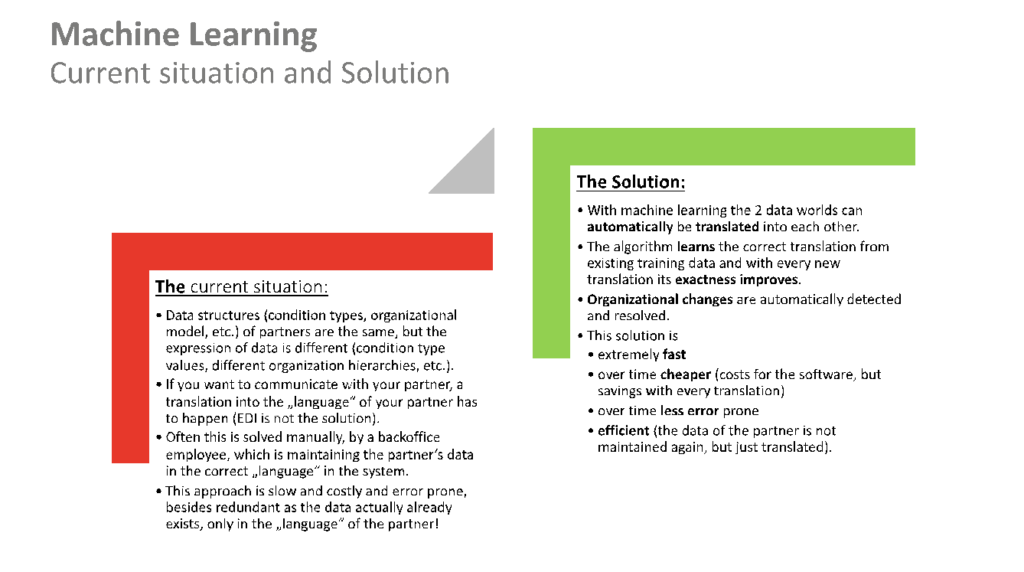Digital transformation is not limited to the introduction of appropriate software systems, but above all reorganises business relationships, corporate processes, and value chains. The corresponding software supports and drives this transformation. However, it is primarily a tool to achieve this goal.
Business transformation affects the respective functions, modes of action and departments. Processes are viewed from a holistic perspective. If your company strives to get the job done right and keep customers happy, and your partner has the same goals of getting the job done quickly and with good quality, then the partnership is on the right track. This can be achieved to the satisfaction of both partners with Artificial Intelligence (AI).
Machine Learning is a sub-field of AI and uses algorithms and statistical methods to analyse data and recognise patterns. Algorithms can recognise patterns and regularities in data sets and develop solutions from them. Simply defined, knowledge is generated from experience and that is exactly the way to an intelligent enterprise.
Machine Learning helps people work more easily and efficiently. It can be used to delegate recurring, rather boring and time-consuming tasks to the computer. Companies can thus make the right decisions and significantly improve their processes using Machine Learning. This applies not only within companies, but across company boarders.
This will be illustrated below, using the example of automating processes between business partners, e.g. data transfer of price condition agreements, with our Collaboration tool. Here, Machine Learning is used to accelerate the process, increase quality and reduce errors.
Without Collaboration:
Both partners perform approximately the same process steps in the respective company.
This leads to redundant work and increased error rate.
With Collaboration:
Both partners manage similar process steps from a single hand.
Below we show the benefits using the example of automation processes between business partners. Data transfer of price condition agreements.
Synchronise prices and agreements with the business partner
- One time maintenance of agreements at one point. Elimination of redundant work by merging the synchronisation of processes of retailers and suppliers.
- Fastening of agreement data transfer to partner(s) via digitised and automated processes.
- Upon release partner receives the data transferred to his structures by Machine Learning and automatic transfer to ERP.
- Dispute case and error reduction by translation of data in structures of partner side using Machine Learning.
- No redundant maintenance, no errors.
- 100% digital, no more additional manual work.
Business Value – What benefits are actually created?
The holistic approach of end-to-end value creation creates the necessary transparency about the scope of value creation along the value chain. With the use of AI, here using Machine Learning as an example, value chains and process chains are aligned with each other.
As more areas of a company are involved in the solution used, the higher the product value. The possibility for value-enhancing improvements across company boundaries is given. Work processes become measurably more effective even across company boundaries since, for example, multiple data entries are avoided. Time-consuming control steps and coordination efforts are eliminated on both sides.
In detail, this means:
- The number of complaints is reduced
- Risks are minimised
- Competitive advantages are created
- Cost reduction in time and money due to error reduction or early detection of errors in transmitted contracts
- Integration into the settlement process through holistic process support including ERP system integration
- KPI insights through interactive dashboard
Let’s start into the future of digital transformation.



